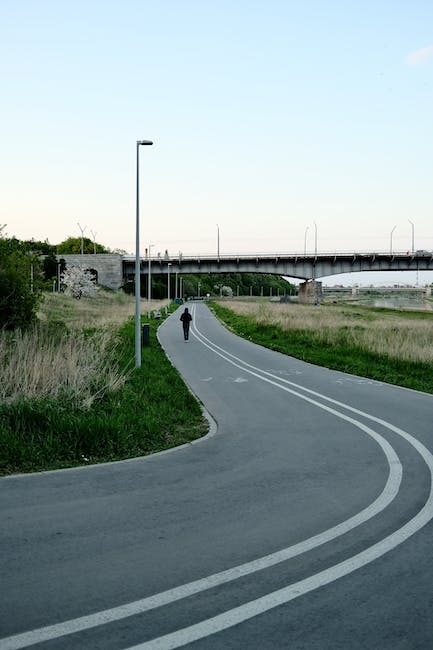The open road is calling, but before you hop into your car, consider the alternatives. From bikes to buses, there are plenty of ways to roam the roads that are both eco-friendly and wallet-friendly. In this guide, we’ll explore the world of alternative transport and show you how to get from point A to point B without breaking the bank or harming the environment. Whether you’re a seasoned traveler or just looking to shake up your daily commute, this guide has something for everyone. So buckle up (or strap on your helmet) and let’s hit the road!
1. Exploring the World on Wheels: A Beginner’s Guide to Alternative Transport
Are you tired of the same old routine of driving your car or taking public transportation? It’s time to explore the world on wheels with alternative forms of transport. Not only will you save money on gas and reduce your carbon footprint, but you’ll also have a unique and exciting way to travel.
There are many options for alternative transport, from bicycles to electric scooters to skateboards. Each option has its own benefits and drawbacks, so it’s important to choose the one that best fits your needs and lifestyle. Some factors to consider include distance, terrain, and weather conditions. Don’t be afraid to try out different forms of transport to find the one that works best for you.
- Bicycles: A classic option for alternative transport, bicycles are great for short to medium distances and can be used in a variety of terrains. They’re also a great way to get exercise while commuting.
- Electric Scooters: These are a newer option that have become increasingly popular in recent years. They’re great for short distances and are easy to use, but may not be suitable for rough terrain.
- Skateboards: A fun and unique option, skateboards are great for short distances and can be used in a variety of terrains. They do require some skill to use, so they may not be suitable for everyone.
Whatever form of alternative transport you choose, be sure to prioritize safety. Wear a helmet and other protective gear, follow traffic laws, and be aware of your surroundings. With a little bit of practice and patience, you’ll be exploring the world on wheels in no time.
2. From Bikes to Buses: How to Roam the Roads Without a Car
There are many ways to get around without a car, and it all depends on your needs and preferences. Here are some options:
- Bikes: Biking is a great way to get exercise and save money on transportation. You can buy a bike or rent one from a bike-sharing program. Just make sure to wear a helmet and follow traffic laws.
- Public transportation: Buses, trains, and subways are a convenient way to get around if you live in a city. You can buy a pass or pay per ride. Just make sure to check the schedule and plan your route ahead of time.
- Carpooling: If you have friends or coworkers who live nearby, you can carpool to save money on gas and reduce your carbon footprint. You can also use a ride-sharing app like Uber or Lyft.
Remember, you don’t have to rely on a car to get around. There are many alternatives that can save you money, reduce your environmental impact, and even improve your health. So, next time you’re thinking about hopping in your car, consider these options instead.
3. Eco-Friendly and Budget-Friendly: The Benefits of Alternative Transport for Travelers
Traveling is an exciting experience, but it can also be expensive and harmful to the environment. Fortunately, there are alternative modes of transportation that are both eco-friendly and budget-friendly. Here are some benefits of using alternative transport for travelers:
- Bicycles: Biking is a great way to explore a new city while getting some exercise. It’s also a cheap and eco-friendly option. Many cities have bike-sharing programs, making it easy to rent a bike for a day or two. Plus, you can avoid traffic and parking fees.
- Public Transportation: Taking public transportation is a great way to save money and reduce your carbon footprint. Many cities have extensive bus and train networks that can take you to all the major tourist attractions. Plus, you can sit back and relax while someone else does the driving.
- Carpooling: If you’re traveling with a group, consider carpooling. This not only saves money on gas and parking fees, but it also reduces the number of cars on the road. Plus, it’s a great way to bond with your travel companions.
By using alternative modes of transportation, you can save money and help protect the environment. Plus, you’ll have a unique and memorable travel experience. So next time you’re planning a trip, consider leaving the car behind and trying out one of these eco-friendly options.
As we come to the end of our journey through alternative transport options, we hope that this guide has inspired you to roam the roads in a different way. Whether it’s biking, walking, or taking public transportation, there are plenty of ways to get around that are both eco-friendly and budget-friendly. By choosing alternative transport, you’ll not only reduce your carbon footprint, but you’ll also have the chance to explore your surroundings in a new and exciting way. So next time you’re planning a trip, consider leaving the car behind and trying out one of these alternative options. Who knows what adventures await you on the road less traveled?






























